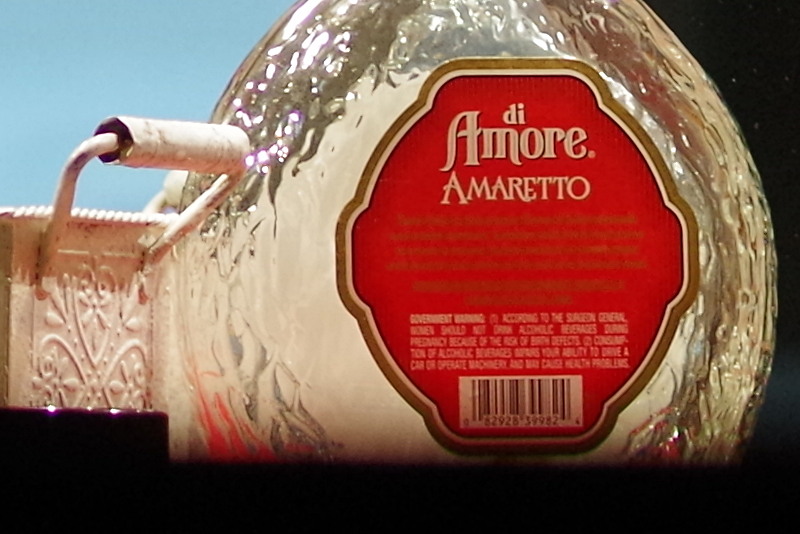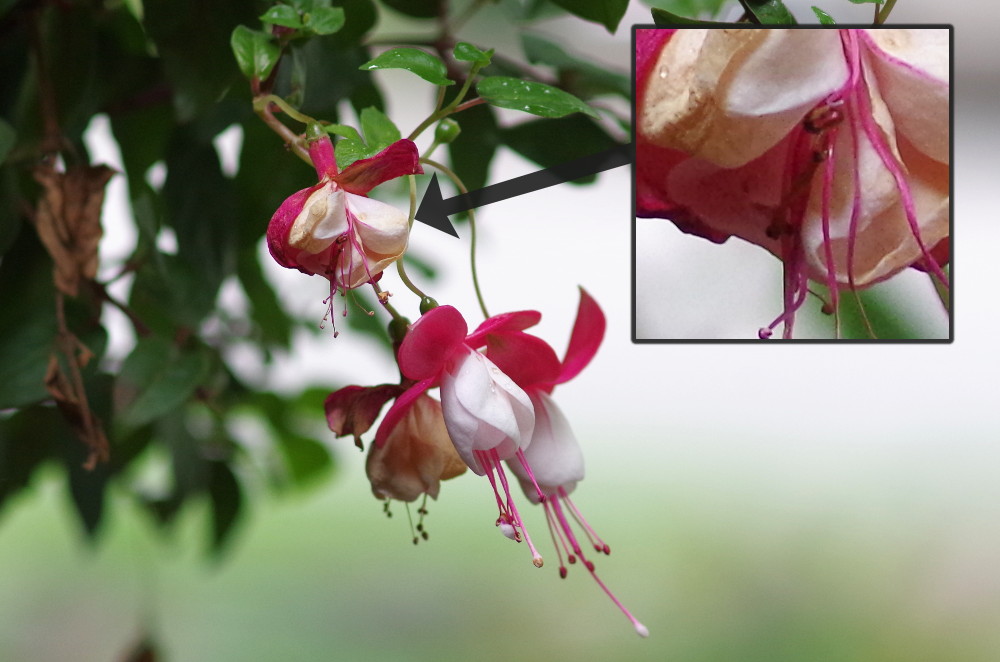| Author: | | Veteran Member Registered: January, 2012 Posts: 1,972
2 users found this helpful
| | Review Date: April 21, 2013 | Recommended | Price: $59.00
| Rating: 9 |
| Pros: | Sharp, great for portrait when wide open,bokeh, compact, built-in lens hood | | Cons: | quite heavy, hard to find | | Sharpness: 10
Aberrations: 9
Bokeh: 9
Handling: 7
Value: 10
| |
I bough this lens since I simple had a great experience with RMC Tokina 17mm so lacking of something in 135mm range I though I would go for this one, from local Cash Converters. I paid I £39 but the lens has immaculate glass with only 1 tiny dust speck inside and overall great shape.
lens is built like a tank - with great feel and it looks like will last far longer than myself  , anyway I found it to be quite heavy but due to this awesome compactness it is surprisingly easy to carry. Also built - in lens hood makes life so much easier - it just slides in and out of the lens - quite cool if you ask me. , anyway I found it to be quite heavy but due to this awesome compactness it is surprisingly easy to carry. Also built - in lens hood makes life so much easier - it just slides in and out of the lens - quite cool if you ask me.
But I did 7 for handling due to one quirk I found on my K10D - when I set the lens to infinity - it looks quite strange - so at first I thought it was something wrong with it's sharpness. But then I discovered that when I slightly move the focusing ring away from an infinity position - the sharpness is back in full its glory !! I don't know why, perhaps years of usage or abusing (too strong twisted focusing ring ?) but my copy reaches an infinity focus on about 2-3mm earlier position that it is marked on the scale. So only for this one trickery I gave it 7 for handling - otherwise it would be solid 9 for sure. I attached one test of this thing with infinity focusing - you can see two 100% crops stitched together in PP from two images done with maximum and slightly less than maximum focusing ring - and also full image with area of interest highlighted.
I think that's all from me for now. Very curious if some other Pentax users has any experience with this lens!
EDIT: Raised rating for sharpness to 10 - after some comparisons I realized how sharp this lens is - even wide open, but stopped down it really stands on pair with some of my sharpest lenses, so I think 10 in this context is fully justified..
EDIT2: I found in old Pentax manual about lenses that some lenses has this feature of focusing PAST the infinity mark - especially for telephoto lenses - to accommodate changes in the lenses due to temperature changes. Here is a quoted text : "Note on infinity Mark: The focusing ring on the telephoto lens stops slightly PAST the infinity mark. This is because temperature change causes the focusing point to shift, making the lens focus on a point past the infinity mark. Even when shooting at infinity be sure the image is in focus utilizing the focus indicator before releasing the shutter."
- So it looks like this prime has similar feature - as I noticed that focusing ring focuses to infinity sometime right at the infinity mark and sometime slightly past it. Just an interesting thing to know I guess...
- manntax
| | | | | | | Forum Member Registered: November, 2012 Posts: 66
1 user found this helpful
| | Review Date: May 26, 2013 | Recommended | Price: $60.00
| Rating: 10 |
| Pros: | Solid build, hood included, sharp | | Cons: | Not well known | | Sharpness: 10
Aberrations: 9
Bokeh: 9
Handling: 10
Value: 10
| |
I have a collection of 135mm lenses, PK and M42 mounts. This one is a good one.
I tried it on my K5. Once mastered, the images are very good and excellent at f4.
At f4, the lens is very sharp with a good micro-contrast. There is only a very very small amount of CA on the border or in out-of-focus area, so for 9/10. But, digital sensors show some CA and PF for film era lenses that it very easily corrected in PP.
If you want to play with a sharp and cheap 135mm lens, go for a Tokina 135 f2.8 RMC.
| | | | | Veteran Member Registered: September, 2013 Posts: 306 | | Review Date: September 22, 2013 | Recommended | Price: $10.00
| Rating: 9 |
| Pros: | Sharp,color,contrast,f2.8,size,weight | | Cons: | No af | | Sharpness: 10
Aberrations: 8
Bokeh: 9
Handling: 9
Value: 10
| |
My copy has now problems with blades are little slow, oil...
| | | | | New Member Registered: September, 2014 Posts: 1
1 user found this helpful
| | Review Date: October 4, 2014 | Recommended | Price: $58.00
| Rating: 9 |
| Pros: | great build, handling, bokeh | | Cons: | little soft at f2,8 - great for portraits | | Sharpness: 9
Aberrations: 9
Bokeh: 9
Handling: 10
Value: 10
Camera Used: K30, K10D
| |
Nice lens, good sharpness, colour rendering and bokeh.
| | | | | | | Pentaxian Registered: April, 2009 Location: Madrid, Spain Posts: 10,879
1 user found this helpful
| | Review Date: March 27, 2016 | Recommended | Price: $50.00
| Rating: 9 |
| Pros: | Great build quality, very sharp, fast | | Cons: | Heavy, only full f-stops | | Sharpness: 9
Aberrations: 9
Bokeh: 10
Handling: 10
Value: 10
Camera Used: K200D, Fujifilm X-M1, film SLRs
| |
I haven't used this lens extensively (I'm not much of a telephoto user) but when I compare this to my other 135mm lenses (M 135/3.5, Vivitar 135/2.8 M42) this one clearly comes out on top. Build quality is fantastic - it's incredibly solid, the focusing ring is very smooth and the aperture ring clicks nicely.
Image quality is superb. At f/2.8 it's acceptably sharp and by f/4 it's really sharp. Colour and contrast are very nice, as is the bokeh.
The pull-out lens hood is short but handy to have and does the job adequately. I've never had any problems with flare with this lens.
The down-sides to this lens are the weight due to the solid build and that the aperture ring only moves in full f-stops. That's not much of a problem with a digital camera but on a film camera which only allows shutter speed changes in full f-stops it can be annoying not to have much precision in the exposure.
Overall I'd highly recommend this lens. It's fast, extremely well-build and has great image quality. All-round a much better option than the far more common "M" series f/3.5 lens. I've now added a copy in SR mount to use on my Minolta cameras and it performs just as well as the K-mount copy.
Here are some sample shots. The black and white ones were taken on film and the low contrast is due to my poor scanning & PP skills, but they serve to some degree to show sharpness and bokeh, though sharpness is also limited due to scanning and the limitations of the film. The film ones were all taken wide open or at f/4 I believe.

IMGP9964a Tok_135_2.8 by Jonathan MacDonald, on Flickr

IMGP9901a Tok_135_2.8 by Jonathan MacDonald, on Flickr
Taken at f/4:

DSCF0160a by Jonathan MacDonald, on Flickr
Adding some shots on full-frame (Lumix S5):

Croc II by Jonathan MacDonald, on Flickr

Pelicans II by Jonathan MacDonald, on Flickr

Butterfly by Jonathan MacDonald, on Flickr
And on film (not very good scans):
GP1189a[/url] by Jonathan MacDonald, on Flickr

IMGP1187a by Jonathan MacDonald, on Flickr
| | | | | Senior Member Registered: July, 2012 Posts: 205
2 users found this helpful
| | Review Date: June 16, 2016 | Recommended | Price: $39.00
| Rating: 9 |
| Pros: | Surprisingly sharp, easy to focus, good build, and dirt cheap. | | Cons: | A little soft at f/2.8, you will need a better hood if shooting outdoors | | Sharpness: 8
Aberrations: 8
Bokeh: 9
Handling: 10
Value: 10
Camera Used: K-5
| |
I purchased the lens based upon the reviews on PentaxForums figuring my 70-200 f/2.8 was going to be sent in for servicing and having a spare cheap prime for outdoor headshots or video couldn't hurt. The hype over the lens is real. This prime lens is small and lightweight compared to zooms. It is also very easy to focus (for a manual lens) with a very smooth focus ring. I first tested the lens during a tech rehearsal for a play and was surprised how easy it was to focus in poor light. The build quality is similar to other good lenses of that era, generally better than what is available today. The bokeh is pleasing and it is sharp from f/4 - f/16. At f/2.8 it is a little soft but not terrible. It is sharp enough for outdoor portraits wide open with perhaps a little sharpening in PP. At f/4 it is sharp and at f/5.6 it hits maximum sharpness.
Cheap primes are usually cheap for a reason (they stink) but sometimes there are good values that work well with modern cameras, which is likely why you are reading this review. It will likely cost you more for a tank of gas than to buy this lens. I put this lens in the same value category as the Pentax 50mm M f/1.7. It costs about the same and the results are still excellent at most f-stops by modern standards.
| | | | | New Member Registered: May, 2011 Location: Brisbane Posts: 4 | | Review Date: August 14, 2016 | Recommended | Price: $28.00
| Rating: 8 |
| Pros: | Great 135mm lens. Fairly sharp, but sharpens up even better with PP. | | Cons: | Low contrast, but again, comes up nicely with some PP. BEWARE: This lens performed poorly when using an adapter on my Olympus EM5. | | Sharpness: 8
Aberrations: 9
Bokeh: 9
Handling: 9
Value: 10
Camera Used: K100D
| |
  | | | | | Veteran Member Registered: September, 2006 Location: Ames, Iowa Posts: 774
1 user found this helpful
| | Review Date: August 27, 2016 | Recommended | Price: $40.00
| Rating: 8 |
| Pros: | Sharpness, size, long focus ring throw | | Cons: | full-stop aperture clicks only | | Sharpness: 8
Aberrations: 8
Bokeh: 7
Handling: 7
Value: 9
Camera Used: K-01
| |
I'm putting this up early as a record of first impressions, as I've owned the lens only a few days; revisions may follow after I've handled it some more.
This Tokina was purchased for $40 via auction. I had been considering the much more expensive (though still a bargain, for its class) Rokinon/Samyang 135mm f/2.0 manual focus lens and decided this might be a good way to decide whether to invest in a good 135mm prime.
My sample arrived with a focus ring that took some muscle to move; perhaps it hadn't been used for a while and grease had solidified and settled in the focus mechanism. It has loosened up a little bit as I've worked it, but it's still quite stiff. The ring moves about 190 degrees, which helps with critical focusing, and given the stiffness, there's no need to worry about it creeping around during use. The lens itself is quite compact, though solidly built and heavy. If anything, it might be a little more compact than ideal: if the barrel had a wider diameter, a person with typical-sized hands would have better leverage on that focus ring.
As is typical for third party lenses, the focus ring operates backwards from Pentax convention: infinity is approached counterclockwise.
There is an integrated extendable hood, which will help with flare in some situations, but on an APS-C camera, a longer one can't hurt. I put a cheap 52mm threaded metal hood on which extends about twice as far as the bulit-in hood, and am sure it improves contrast slightly at wide apertures even when not dealing with bright incidental lights. With the added hood in place it seems safe to forego a protective front filter.
Wide-open f/2.8 shots are somewhat soft, with a nice dreamy bokeh. That bokeh remains pleasant at f/4 as sharpness and contrast improve significantly; at f/5.6 the sharpness may be close to optimal, but the bokeh has started to grow busy, with jagged hexagon highlights dotting the out of focus areas. As such, I think this lens is just at its best at f/4 where circumstances allow. It's too bad that there are no half clicks available, as f/3.3 and f/4.8 might be useful.
Here is a test shot of an empty Amaretto bottle from about 25 feet away, handheld at 1/30 second, ISO800, f/4, with a little help from sensor shake reduction. (JPG straight from camera, nothing corrected except a little tilt)

A 100% crop of the above, unsharpened, shows that the fine print on the label is readable:

Modest sharpening yields this:

I think this is pretty good for an old $40 lens. I tested the same scene with an A80-200/4.7-5.6 zoom at 135mm and an A*85/1.4 from a few feet closer. The latter is a blatantly unfair comparison of course, and I won't post those results here, but suffice it to say that while the A*85 is spookily sharp, the A80-200 couldn't resolve the label text at all.
One real-life floral sample, with a 100% crop inset:

To sum up: the RMC135/2.8 is a good value, a small lens that delivers detail competently at 135mm. If maybe not in the same league with modern lenses at this length that cost real money, it should easily outperform some standard/long zooms.
| | | | | New Member Registered: November, 2013 Posts: 14
1 user found this helpful
| | Review Date: May 7, 2017 | Recommended | Price: $20.00
| Rating: 9 |
| Pros: | very sharp tele photo lens in 5/4 elements | | Cons: | a few flare | | Sharpness: 9
Aberrations: 8
Bokeh: 8
Handling: 9
Value: 10
| |
similar to Vivitar 2,8/135 is this single lens also a good choice for macro's or close-ups' shootings with macro ring or an achromate in front of the lens.
stopped down to f 4-5,6 interesting bokeh
stopped down to f 8-11 very sharp butterlies
love it very much  
++ very fine, neutral color rendition
++ very nice bokeh
++ high contrast, when stopped a few down
O but sometimes some few flare
| | | | | New Member Registered: January, 2017 Posts: 1 | | Review Date: August 14, 2017 | Recommended | Price: $12.00
| Rating: 10 |
| Pros: | Super sharp and stunning bokeh | | Cons: | Sucks at shooting near bright light - lens hood is important | | Sharpness: 10
Aberrations: 6
Bokeh: 9
Handling: 10
Value: 10
Camera Used: Canon EOS 5D
| |
Absolutely worth it all the way up to $80US. My copy has some fungus demons and it still has plenty of resolving power on my 13mp 5D classic. This is a perfect lens for portraits so long as you're not shooting back-lit - or if you do, I'd recommend using a full frame Nikon to balance the histogram and restore contrast without mushing up the image (for working distance of a typical headshot I strongly suspect you'd get away with using a glass-free M42 - F adapter). I only use this lens wide open at 2.8 and the performance is incredible, especially considering the light amount of fungus. I recommend using live-view if your camera has it (sadly my 5D hasn't). When combined with an old digital full frame camera that was designed to compete with film, the result is very pleasing, I've included some pics, the bird of paradise has a little extra saturation added but otherwise all I've done is adjust the histogram from raw. Please note that I missed focus on the bird of paradise image and the artichoke became the subject in focus.. Also consider how well it rendered the bokeh in all images - the christmas lights had powerlines and a hill with trees behind them and the photo of the jasmine on my home had heaps of twiggy trees and jagged ferns in the background.





 | | | | | Pentaxian Registered: November, 2017 Location: Garden City, NY Posts: 6,349 | | Review Date: June 1, 2018 | Recommended | Price: $13.65
| Rating: 7 |
| Pros: | handling; color rendition; bokeh | | Cons: | Noise (digital); soft-ish | | Sharpness: 7
Aberrations: 7
Bokeh: 9
Handling: 9
Value: 9
Camera Used: K-50
| |
This review is basically a comparison of this lens to the M 135/3.5.
I rated the M 135/3.5 a 9... The Tokina should be a 7.5, but in the absence of such half-ratings, I'd have to round the rating upwards.
Overall - I believe the M 135/3.5 is superior. Is the full additional stop on the Tokina worth it? Not necessarily. Yet, the Tokina is so inexpensive, that it is worth the try - hence I'd recommend but not over the M 135/3.5.
In my opinion. this lens has a better bokeh than the M 135/3.5. Its color rendition is very potent, very pleasing, but easily can get overwhelming on digital post-processing.
Pics taken with it recently:
Taken in the morning, but without a direct light to the subject, and post-processed to BW:

Morning light as well, without the BW:

This one was at dusk, with very little indirect light, and wide open (I was trying out how it worked at 2.8). It is an intereting result, a bit soft, but it has a nice character to it:

EDIT - lowered to 7 due to recent test I did with (best to worse) - Super-tak 135/3.5 | M 135/3.5 | Takumar Bayonet 135/2.8 | Mirage 135/2.8 - which tied with the RMC.... The results are based in that I see a bluish haze with the Tokina RMC - same haze I now see on the shots posted above...
| | | | | New Member Registered: December, 2013 Location: California Posts: 5 | | Review Date: June 8, 2018 | Recommended | Price: $45.00
| Rating: 10 |
| Pros: | Sharp, Creamy bokeh, fast focus | | Cons: | | | Sharpness: 9
Aberrations: 8
Bokeh: 9
Handling: 9
Value: 10
Camera Used: Pentax K-5 II
| |
I'm not sure I have got the same copy as mine says "Tokina-Special" 135mm 1:2.8.
Its a wonderful cheapie to have in your collection. I'm fairly new in photography and I realized in the very beginning my journey will be very tough as I can't be able to buy all the high end digital lens. So I started collecting all film era manual lens and I stumbled into it.
The only downside i find is the minimum MFD.



 | | | | | New Member Registered: May, 2021 Posts: 2 | | Review Date: May 27, 2021 | Recommended | Price: $20.00
| Rating: 9 |
| Pros: | reasonably sharp close ups , bokeh , affordable | | Cons: | some CA | | Sharpness: 7
Aberrations: 7
Bokeh: 10
Handling: 7
Value: 10
Camera Used: Sony A7 II
Focusing: 7
| |
I took a few snaps with this lens ( with an adapter ) and one official modern lens , a Sony 28mm 2.0 wide angle .
The Tokina was a bit soft , but the bokeh is out of this world .
The Sony glass was really sharp and , of course , everything was auto . But the shot was sterile .
The Tokina produced an image that's fun to look at .
Subject is a Millennium Falcon Tall Bearded Iris in my front yard .
 | | | | | Junior Member Registered: February, 2023 Posts: 38
1 user found this helpful
| | Review Date: February 11, 2023 | Recommended | Price: $37.50
| Rating: 8 |
| Pros: | Economical, Durable, Good Optical Quality | | Cons: | No complaint for a lens that was bought at $50CAD | | Sharpness: 8
Handling: 9
Value: 8
Camera Used: ME Super
Focusing: 9
| |
The RMC 135mm f2.8 is one of the Tokina’s early manual focus series lenses. It comes with a built-in hood and is relatively compact (52mm filter thread). The built-quality is on-par with OEM lenses of the same era with no “handle with extreme care” feel. In fact, this is a lens that I would feel comfortable to put in an “non-camera” messenger bag without much additional protection.
Optically, this lens is quite soft wide-open at f/2.8 though some might be able to use this as an advantage in certain situations. However, closing down one-stop to f/4 makes a dramatic different and the image quality holds steadily without much change until about f/11. Only at f/22 diffraction kicks in to degrade the image. Figure below shows the difference at f/2.8 and f/4 using a 100% crop from a 2400dpi scan from a frame of 35mm Fomapan 100.

Another sample image that is scanned at 2400dpi and taken with Delta 400, followed by its 100% crop:


It is most certainly not SMC but the coatings still seem pretty nice for a third-party lens,
 | | |







 , anyway I found it to be quite heavy but due to this awesome compactness it is surprisingly easy to carry. Also built - in lens hood makes life so much easier - it just slides in and out of the lens - quite cool if you ask me.
, anyway I found it to be quite heavy but due to this awesome compactness it is surprisingly easy to carry. Also built - in lens hood makes life so much easier - it just slides in and out of the lens - quite cool if you ask me.





































